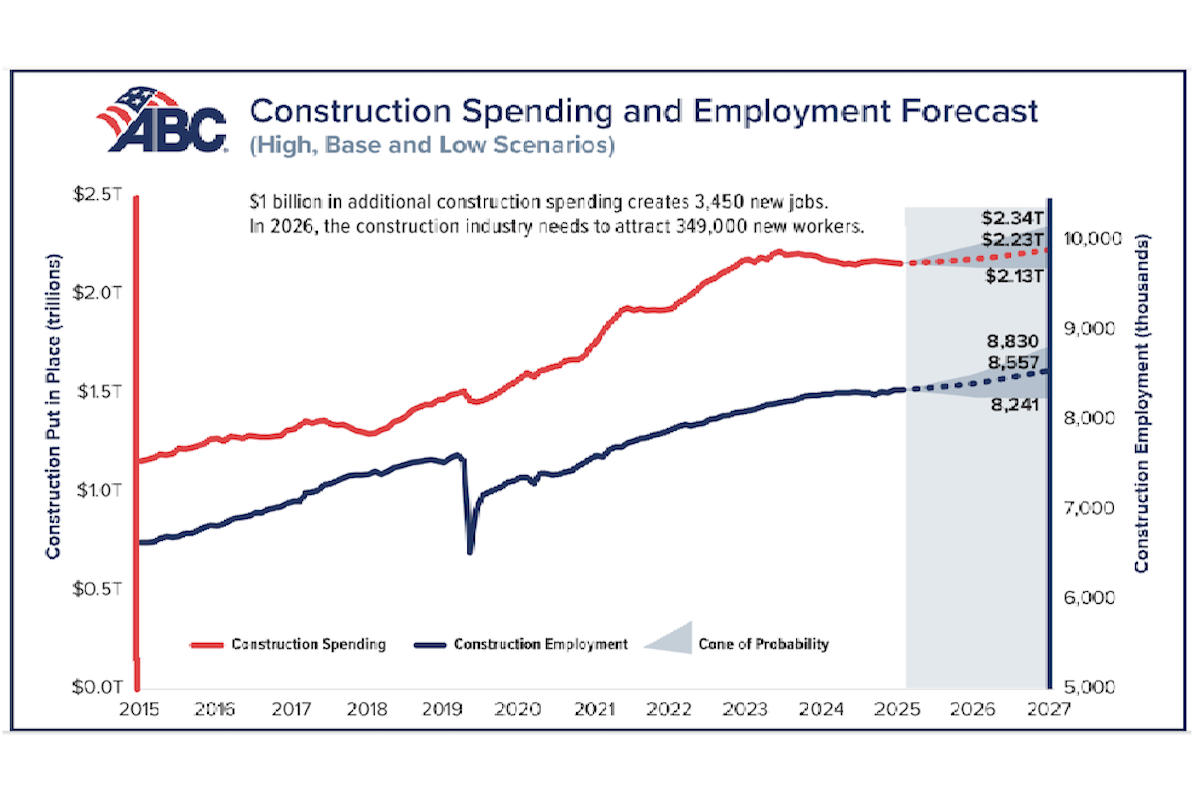Since the start of the coronavirus pandemic in March, uncertainty has plagued the construction ecosystem. Most states and municipalities declared construction businesses essential, but not before many of them preemptively laid off workers in April, only to hire most of them back in the following months. As the pandemic raged on, the construction ecosystem faced ongoing challenges to remain productive while keeping employees safe and healthy. Even before the pandemic, McKinsey & Company noted that construction firms had seen only 1 percent growth in productivity over the past two decades (representing just a third of the total economy’s average). As productivity challenges have been heightened by the pandemic, many construction companies are embracing technology investment as a solution.
Technology investment is often difficult for construction companies. They already have technology infrastructure. Not unlike the infrastructure projects they take on across the country, it can be difficult to assess when best to tear up a roadway or bridge and start fresh versus fixing the potholes or weakened stanchions.
In order to evaluate your company’s technology, I recommend the following approach:
- Inventory your current technology infrastructure and applications and review how each solution is used.
- Slow technology spending for a period of time on nonessential needs to prevent potential unnecessary outlays.
- Identify any redundant technologies and develop a consolidation strategy. Make appropriate changes for the best-in-class solutions to put your organization on a limited number of options, as this is often the most cost-effective, long-term approach and helps limit integration points and improve overall organizational processes.
- Review your current software agreements.
- Develop business requirements and assess the current state technological gaps across the organization.
- Assess whether any new technologies can help produce more efficient and effective results for the organization or fill in any gaps in the technological infrastructure.
- Provide opportunities for feedback from employees and establish proper feedback channels to manage and improve technology infrastructure.
- Develop a change network within your organization to drive system, process and organizational changes.
- By utilizing this approach, construction companies can better assess where and how new technology can help them. The easiest way to reach the cloud is to build from the ground up.
Enterprise Resource Planning (ERP)

| Your local Atlas Copco CMT USA dealer |
|---|
| Bane Machinery |
| Cooper Equipment Co |
| Bee Equipment Sales Ltd |
| Central Texas Equipment |
| Closner Equipment Co Inc |
An ERP system is the center of all organizational processes and helps organizations manage day-to-day business activities such as accounting, production, supply chain management, and financial and management reporting.
Key players include:
- Acumatica
- CMiC Construction Software
- Coins
- JD Edwards ERP
- Jonas
- Microsoft Dynamics 365
- Oracle
- Penta
- Sage 300 Construction and Real Estate
- Viewpoint
Project Management Solutions
On-site individuals use project management solutions to manage construction projects by analyzing labor, materials, and allowing insight into jobsite productivity. They standardize processes across multiple projects, improve communications across teams, and allow for accurate monthly forecasting. Many project management systems leverage predictive analytics that support project managers in making strategic decisions.
Key players include:
- Autodesk BIM 360
- HCSS
- Kahua
- Oracle Aconex
- Oracle Primavera
- Procore

| Your local Yanmar dealer |
|---|
| WPI |
| CLM Equipment Co |
Enterprise Performance Management (EPM)
EPM solutions automate strategic planning and reporting processes and enable companies to define, analyze and execute strategic goals relative to finance, operations, business modeling, analysis, and key performance indicators. Typical benefits of EPM solutions include reducing or eliminating manual efforts to prepare reports; reducing risk of incorrect calculations; reconciling to ERP solutions and other data sources, facilitating consolidations, intercompany matching, allocations, eliminations, currency conversions; providing a single version of truth; and delivering executive insights with integrated management dashboards.
Key players include:
- Adaptive Insights
- Anaplan
- Planful
- Prophix
- Solver
- Vena
Building Information Modeling (BIM)
BIM is a 3-D design and modeling software that gives construction professionals (architecture, engineering, and builders) the ability to more efficiently and effectively plan, design, construct, and manage buildings and infrastructure.

| Your local Sennebogen LLC dealer |
|---|
| ASCO Equipment |
| WPI |
Key players include:
- Assemble
- Autodesk BIM 360
- ENG Works
- Revizto
Robotics Process Automation (RPA)
RPA refers to a set of modular software programs (or bots) used to complete structured, repeatable and logic-based tasks by mimicking the actions taken by existing human staff. Bots are designed to augment a human workforce, making workers more productive by eliminating the need for humans to spend time on repetitive, low-value activities. For the construction industry, that could mean requisition creation, updating subcontractor and vendor lists, managing documents, helping with estimate generation, and cost monitoring to name a few.
Key players include:
- Automation anywhere
- Blue Prism
- UiPath



































































